Table of Contents Show
On May 15, 2020, Netflix launched the final season of She-Ra and the Princesses of Power, giving the Adora/Catra couple a grand and epic declaration of love historically reserved in the media for hetero-romantic pairings. It was very important for show-runner Noelle Stevenson to have this couple be canon and through her careful planning, she ensured this LGBTQIA+ romance was powerful, magical, and transformative. This is how hetero-romance is typically portrayed in children’s fantasy media, so why shouldn’t the LGBTQIA+ community get the same?
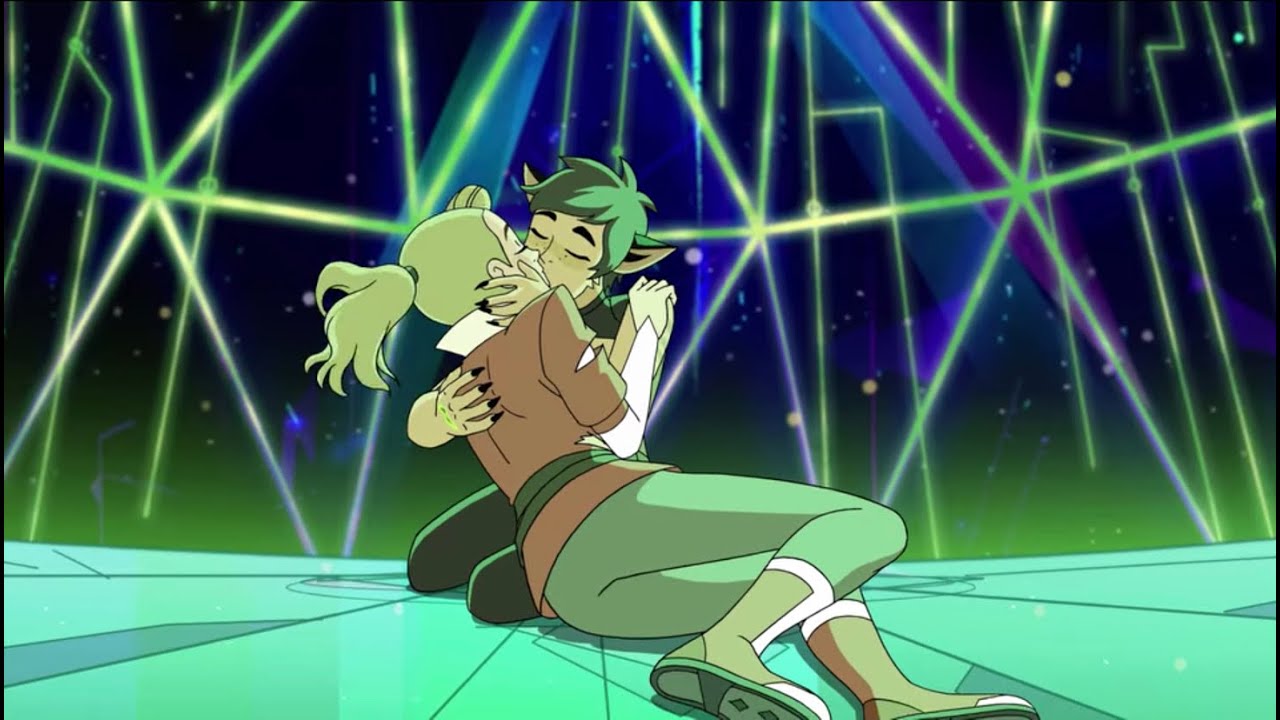
As many celebrate the fairy tale happy ending of this couple, it’s important to reflect on how children’s media has reached this point in LGBTQIA+ representation. Many creators and fans have fought for queer characters and stories, wanting to not only give LGBTQIA+ children the queer fictional role models but also to normalize identities that are vilified in a heteronormative society. LGBTQIA+ and ally creators have fought homophobic backlash for giving children shows and movies that accept all forms of love and that teach kids not to let themselves be held back by societal expectations.
History Of Heteronormativity + Children’s Media
Heteronormativity structures our social lives so that heterosexuality and cis-genderism are always assumed and expected. As a result, LGBTQIA+ individuals are stigmatized and treated as abnormal. Traditional gender roles in sexual/romantic relationships are also promoted by heteronormativity.
Heteronormativity is constructed in children’s media, which plays a significant role in shaping children’s cultural understanding of romance and sexuality. The twentieth century was a time of phenomenal growth and development of new kinds of media. Beginning in the early 1940s, children’s media experiences expanded to include television, recorded music, videotapes, electronic games, interactive computer software, and the Internet. From the 1940s onward, young children became submerged in a media-rich world.
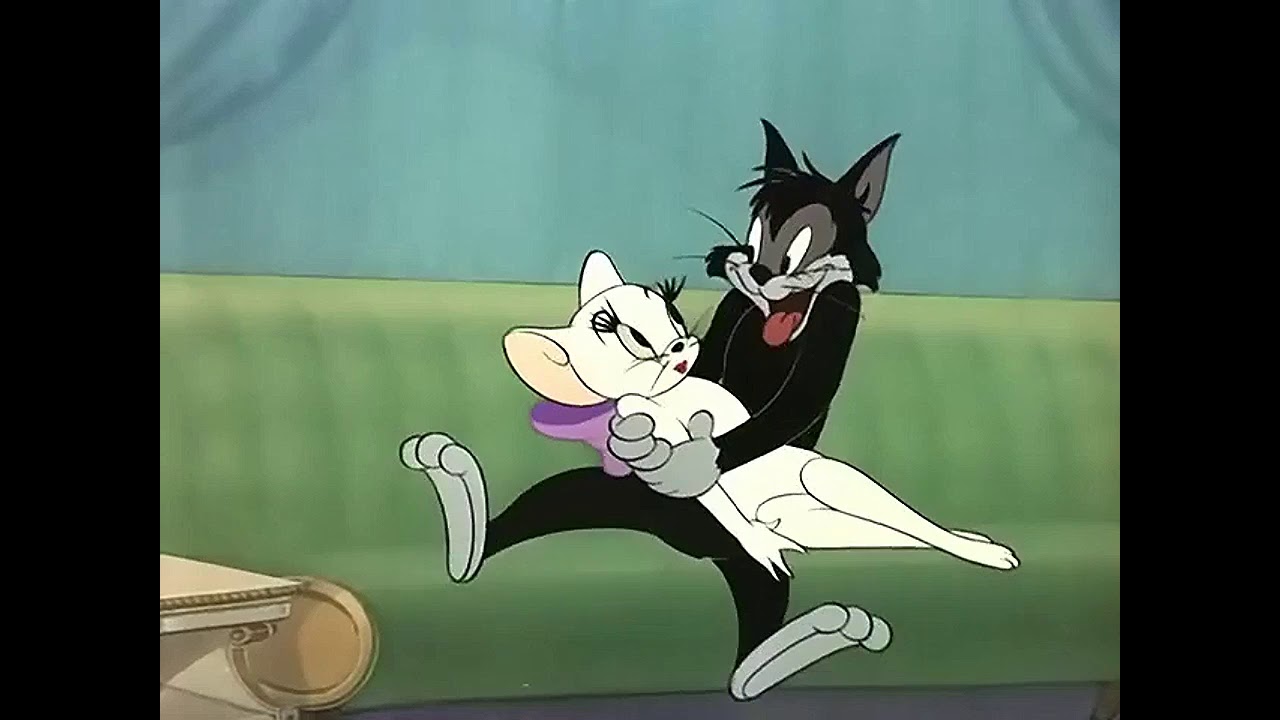
In this media-rich world, it’s natural that children’s television and films play an important role in romance and sexuality socialization. For example, looking at early children’s television programming of the 1940s-1950s, Tom and Jerry had episodes of animals falling in love with animals of another sex.
Gender Roles In Children’s Media
In one episode titled “Casanova Cat,” Tom battles for the affection of a female cat and accidentally kisses the rival male cat. Both look at each other annoyed and continue their fight over the female cat. A simple episode reinforces heterosexuality as the default while normalizing traditional gender roles in courtship. Children’s media portrayed boys and girls of every age, of every species, swooning over someone of the other sex, dating, and falling in love while never suggesting that heterosexuality is not the universal experience.
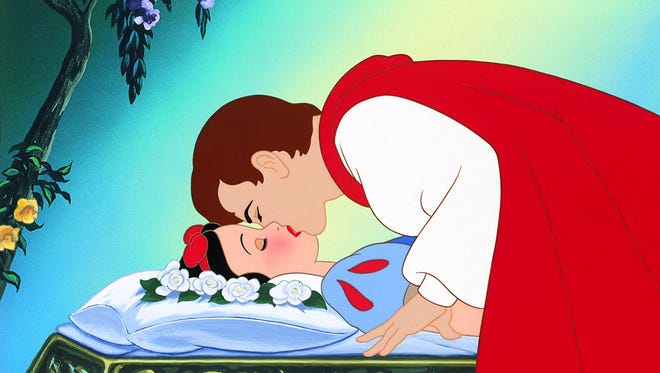
While there were pieces of media from the 1940s-1970s that referenced LGBTQIA+ identities and themes, the portrayals were primarily negative and associated with sexual perversion, violence, and tragedy. This culturally accepted negative view of the LGBTQIA+ community established LGBTQIA+themes as “mature” content. As “mature” content, it was never overtly addressed unless it was for comedic purposes. Two men accidentally kissing or getting married were played as jokes based on the heternormative assumption that people of same-sex couldn’t be attracted to each other.
Additionally, many films went further and portrayed heterosexuality as exceptional. Disney animated films have constructed hetero-romantic love as magical and powerful: a prince’s kiss can bring a Snow White back from the dead and break Aurora’s curse. This portrayal of hetero-romance as magical and transformative began in the 1950s and continued throughout the 2000s.
Educational LGBTQIA+ Content
The late 1980s, early children’s programming that acknowledged the LGBTQIA+ community were part of educational programs for kids. In 1986, HBO aired a television film titled The Truth About Alex as part of their HBO Family Playhouse. The film was based on the book Counterplay by Ann Synder. In 1987, CBS Schoolbreak Special aired an episode titled “What if I’m Gay?” and shared with viewers the story of a teenage boy struggling to come to terms with his sexuality. Later in 1993, CBS Schoolbreak Special aired an episode titled “Other Mothers” which featured a boy who was afraid that his friends would think he was gay because he has two mothers.
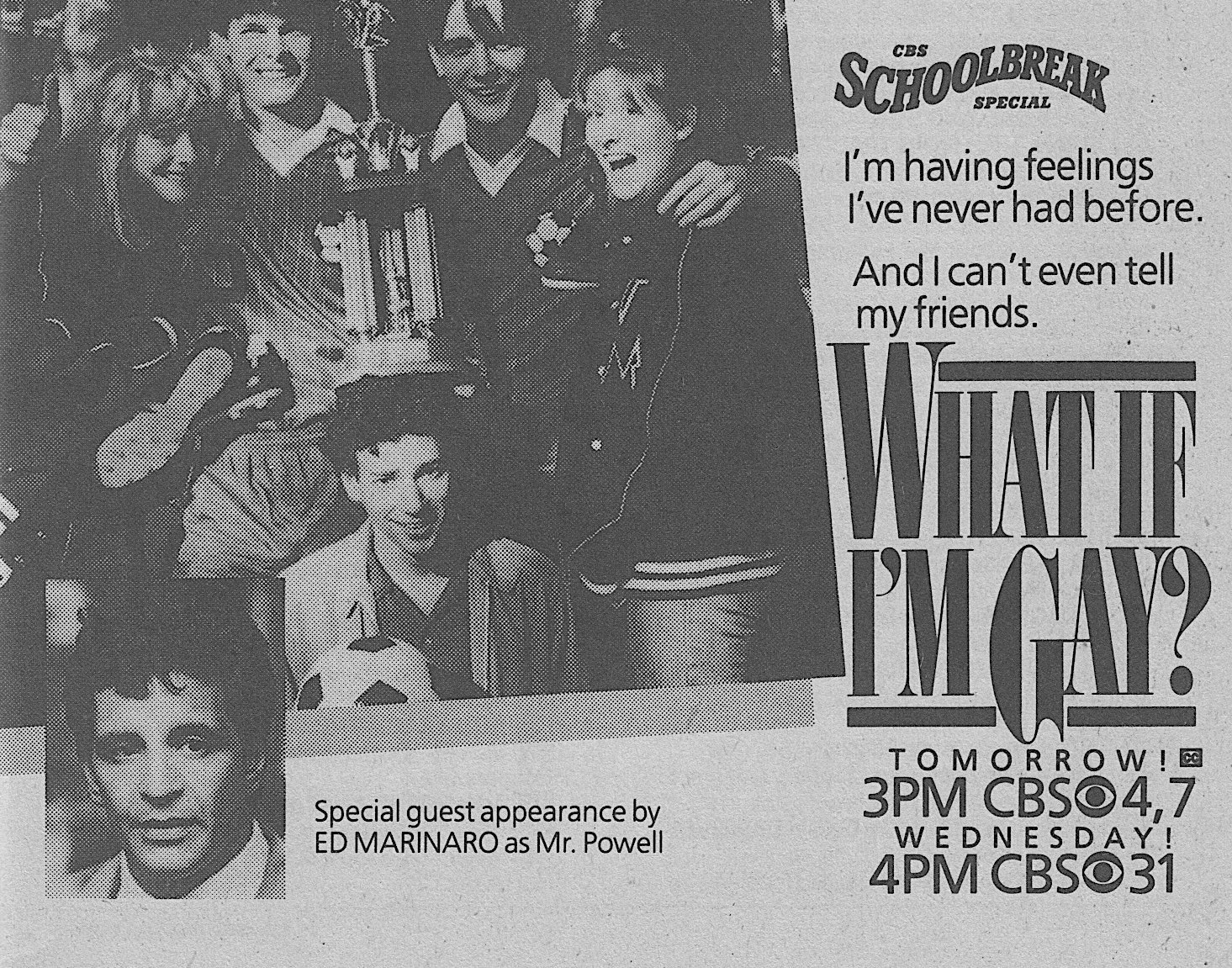
These episodes received positive attention. “Other Mothers” received five Daytime Emmys nominations and won “Outstanding Writing in a Children’s Special.” “What if I’m Gay” received three Daytime Emmy Awards and won Outstanding Direction in Children’s Programming. Despite the positive reception, children’s media was still heavily restricted by watchdog conservative groups who viewed LGBTQIA+ themes as too “inappropriate” and/or “political” for children. This did not stop the creators of 90s and early 2000s children’s programming from introducing undertows of same-sex desire and making references to the LGBTQIA+ community.
Hints On Children’s Television
While the 90s and early 2000s children’s programming didn’t have any overt LGBTQIA+ storylines, they did include intimate friendships and hints that acknowledged same-sex desire. There were also jokes and references that required a knowledge of LGBTQIA+ culture.
While children’s programs didn’t have openly queer characters during this time, there were characters that could be interpreted as LGBTQIA+. In his study on children’s media, sociologist Jeffery P. Dennis points to the numerous secondary characters that came in male same-sex pairs. For example, Nickelodeon had Chester and A.J. on The Fairly Oddparents and nerds Eric and Craig from Drake and Josh. Both pairs did everything together, especially Eric and Craig who even went to Niagara Falls together, a popular honeymoon destination.
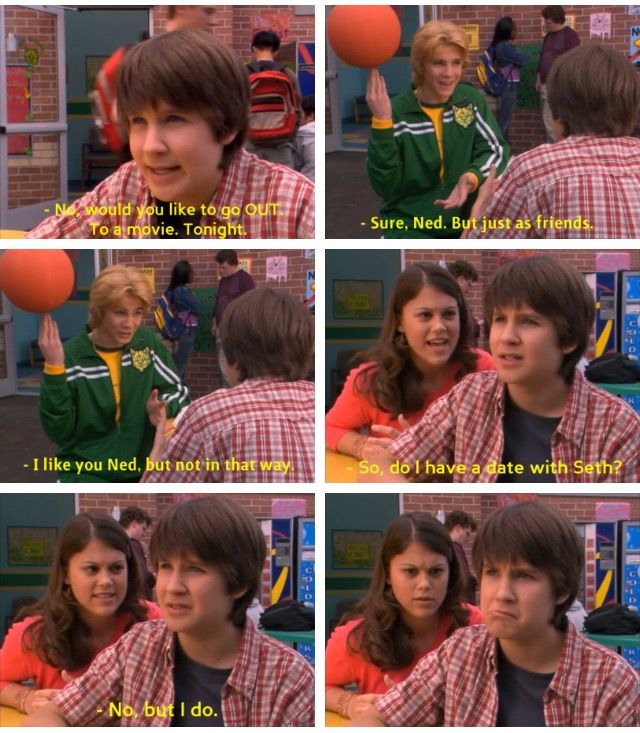
There are also many programs that don’t deny the existence of the LGBTQIA+. On Drake and Josh, Josh kisses a woman who has a deeper voice, implying that Josh kissed a transwoman. But this isn’t the joke: the punchline is that Josh wasn’t chewing gum, yet has gum in his mouth. This suggests that a transgender individual wouldn’t alarm Josh. On Ned’s Declassified School Survival Guide, Ned asks Seth if he’s interested in going on a date with his friend Jennifer, Seth misunderstands and believes that Ned wants the date. He replies “Sure, but just as friends. I like you Ned, but not in that way” which acknowledges that same-sex attraction is unremarkable at the fictional Polk Middle School.
Hints In The Animated Cartoons
These hints were also common in animated series, always appearing as offhand comments. They were never essential to the plot, but they disrupted the heteronormativity and gave viewers a quick, sly peek into a world where LGBTQIA+ identities weren’t abnormal or controversial or something that could be debated. For example, in The Fairly Oddparents, when Timmy morphs into a muscular teen, his friends Chester and A.J. both swoon over him. In The Grim Adventure of Billy and Mandy, male Dean Toadblatt falls in love with Squid-Hat, one of the male teachers. They kiss and get married, flying off on a broom decorated with tin cans and a “Just Married” banner.
Writers also made references to LGBTQIA+ culture. The Suite Life of Zack and Cody has an episode titled “Kept Man” in which a rich boy tries to buy Zack’s companionship. In some gay circles, the term “kept boy” refers to a young man who receives gifts and money in exchange for sex. On Foster’s Home for Imaginary Friends, the creators reference the closet when Mac finds two imaginary friends hiding in the closet and convinces them to reject “the tyranny of the closet” and acknowledge their true identity.
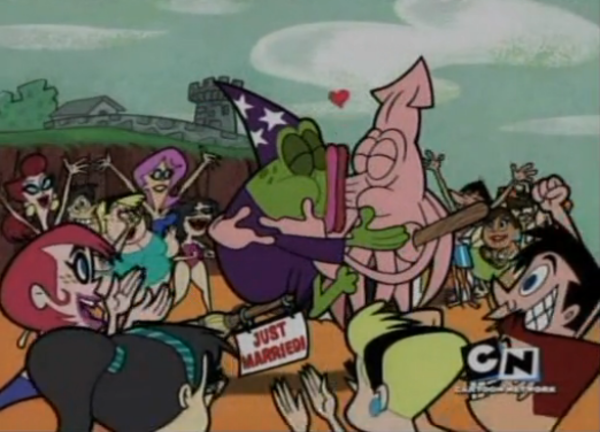
Viewers’ reactions prevented creators from confirming any hints at LGBTQIA+ identities. For example, many fans speculated that Mr. Simmons from Hey Arnold was gay, many pointing to the character Peter who is in the dinner scene in the episode “Arnold’s Thanksgiving.” Peter is vaguely referred to as a friend, along with Joy, but Joy and Peter are not coded as a couple. Peter appears for a second time at the airport with Mr. Simmons in Hey Arnold! The Jungle Movie. Creator Craig Barlett confirmed years later that the character was gay. He never outright mentioned it to avoid controversy. So while creators were able to sneak in references to the LGBTQIA+community, they were never able to be outright with their representation.
The LGBTQIA+ Revolution
In the 2010s, children’s media began moving away from vague representation to more outright, indisputable references to the LGBTQIA+ community. In 2014, Good Luck Charlie began an episode with the mother and father arguing over the name of the mother of Charlie’s play date. One says Susan, the other says Cheryl. When Charlie’s friend arrives for the playdate, it’s revealed both she had two moms, Susan and Cheryl. On Cartoon Network, Clarence received praise for LGBTQIA+ representation because Jeff Randell, one of the main characters, has two mothers.
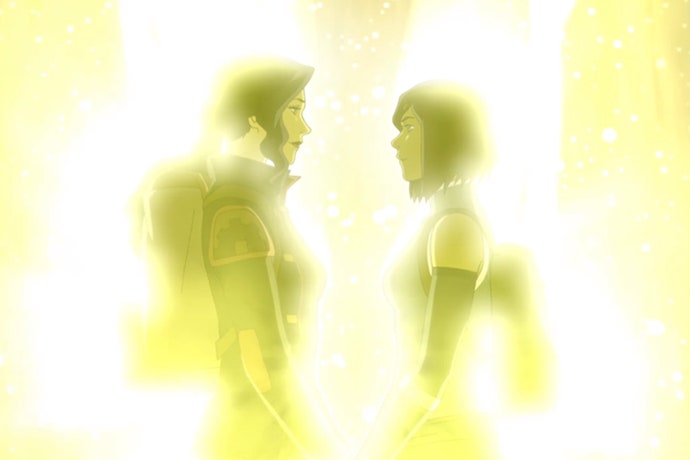
The Legend of Korra went a step further. Background lesbian moms are great, but people wanted to see an LGBTQIA+ main character with an LGBTQIA+ romance. In 2014, the creators of The Legend of Korra concluded the series with Korra and Asami sharing an intimate moment and holding hands as they entered the spirit world for the couple’s vacation. The response was mixed, with fans happy with the representation but also that it wasn’t indisputably LGBTQIA+.
It also felt unfair for the romance to happen at the very end. After the finale, creators Mike Dimartino and Bryan Konietzko stated
“Our intention with the last scene was to make it as clear as possible that yes, Korra and Asami have romantic feelings for each other.”
This confirmation gave fans defense against those who want to call them “good friends.” But fans were still hungry for more canon romantic storylines. Over on Cartoon Network, Rebecca Sugar worked towards more direct representation with Adventure Time and Steven Universe.
A Brighter Future
While working on Adventure Time, Sugar built the relationship between Princess Bubblegum and Marceline the Vampire Queen. In the series finale, the romance was confirmed with a kiss during an intense battle. The script originally stated they “had a moment,” but it was Hanna K. Nyströmthe, the storyboard artist who got the scene, who decided to make that moment a kiss. Additionally, creators introduced BMO, the first of many non-binary characters to arrive on Cartoon Network.
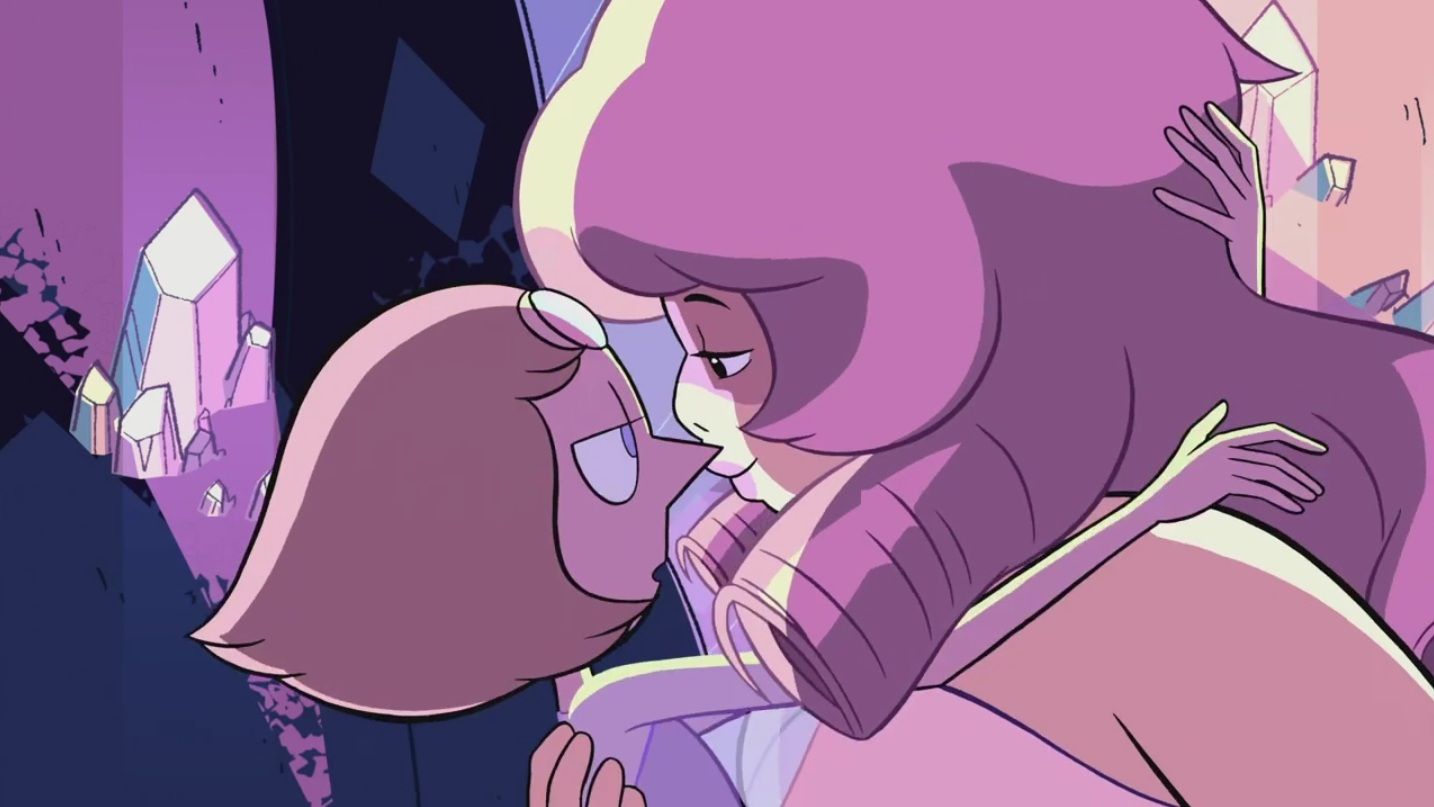
In 2015, Rebecca Sugar’s Steven Universe began hinting at a same-sex romantic attraction. Similar to her work on Adventure Time, Sugar began building the groundwork for same-sex. In the episode “Rose’s Scabbard” Pearl expresses feelings that could be interpreted as romantic for Steven’s mother Rose. These feelings were later confirmed. When discussing fusion, Garnet’s passion for fusion lays the groundwork for revealing that Garnet herself is a fusion that embodies the queer romance of Sapphire and Ruby.
Sugar continued to introduce more LGBTQIA+ characters as the season continued to go by, exploring a variety of queer romances and breakups. The series was eventually able to host a queer wedding on children’s television. Additionally, Sugar introduced the non-binary Stevonie and Shep.
Disney was slower in increasing its LGBTQIA+ representation. After Good Luck Charlie, they introduced their first gay main character on Andi Mack. The character Cyrus Goodman came out in the episode titled “Hey Who Wants Pizza.” Disney consulted with GLAAD, Common Sense Media, PLFAG, and other organizations to ensure his story arc was age-appropriate. Additionally, Star v. the Forces of Evil episode titled “Just Friends” featured a scene where dozens of couples kissed, including a same-sex couple. Disney Plus has included LGBTQIA+ character on their original series High School Musical: The Musical: The Series. Fans hope that Disney, as a major children’s entertainment empire, will make a greater effort to include LGBTQIA+ characters, themes, and storylines.
What Can We Look Forward To?
She-ra and the Princesses of Power gave children a beautiful and magical queer love story, but it wasn’t without careful planning to avoid censorship. In an interview with io9.gizmodo, Noelle Stevenson stated:
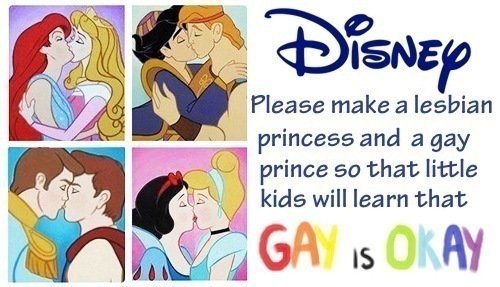
I sort of had a plan and it was like: If I can get them to this place where their relationship and that romance is central to the plot, and it can’t be removed, can’t be noted-out or it can’t be something that’s cut later, then they’ll have let me do it.”
Noelle Stevenson | (( io9.gizmodo interview ))
While we’ve seen greater LGBTQIA+ representation, creators and showrunners still had to introduce LGBTQIA+ storylines and themes gradually. They had to build the relationships subtly and gain support before bringing it to the foreground.
These shows still receive backlash and censorship as well. Many queer romance scenes from Steven Universe were removed when they aired in other countries. In 2019, PBS also aired an Arthur episode titled “Mr. Ratburn and the Special Someone” which featured Patrick and Mr. Ratburn marrying each other. This episode was banned in Alabama.
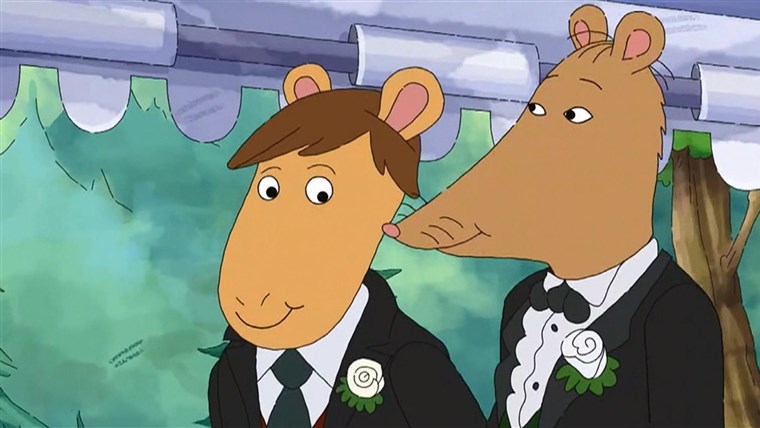
There’s still so much homophobia to fight against, and there are still more roles for LGBTQIA+ characters to take on. The world still needs a canon LGBTQIA+ Disney princess movie after all. But through LGBTQIA+ and allies as creators and fans, we’ll create a world that accepts all forms of love and that does not limit people to gender binaries and the gender expectations that come with them.
In Steven Universe episode titled the “The Answer,” Garnet asks Rose Quartz if her being a love-based fusion upsets her. In response, Rose Quartz declares “Who cares about how I feel? How you feel is bound to be much more interesting.” It is a sentiment that the future of children’s media should be built on.
